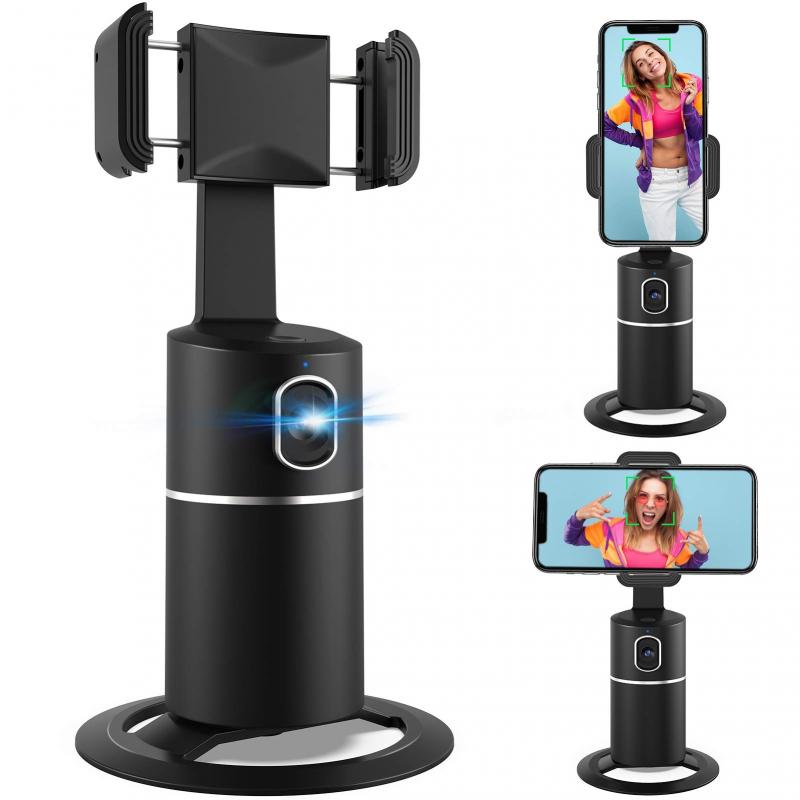How To Use Phone As A Webcam?
In today's digital age, the need for high-quality video communication has never been more critical. Whether you're attending virtual meetings, streaming on social media, or catching up with loved ones, having a reliable webcam is essential. However, not everyone has access to a high-quality webcam, and purchasing one can be an additional expense. Fortunately, there's a practical solution that many people overlook: using your smartphone as a webcam. This article will guide you through the process of transforming your phone into a webcam, ensuring you get the best video quality without breaking the bank.
Why Use Your Phone as a Webcam?

Before diving into the how-to, it's essential to understand why using your phone as a webcam is a viable option. Modern smartphones come equipped with high-resolution cameras that often surpass the quality of standard webcams. Additionally, using your phone can be a cost-effective solution, especially if you already own a smartphone with a decent camera. This method also offers flexibility, as you can easily switch between different devices and locations.
Requirements
To use your phone as a webcam, you'll need the following:
1. A Smartphone: Preferably one with a high-resolution camera.
2. A Computer: Either a PC or a Mac.
3. A Stable Internet Connection: For seamless video streaming.
4. A USB Cable or Wi-Fi: Depending on the method you choose.
5. Software or Apps: Specific applications that facilitate the connection between your phone and computer.
Step-by-Step Guide
1. Choose the Right App
Several apps can turn your smartphone into a webcam. Some popular options include:
- DroidCam: Available for both Android and iOS, DroidCam is a user-friendly app that allows you to connect your phone to your computer via USB or Wi-Fi.
- EpocCam: Another excellent choice for both Android and iOS users, EpocCam offers high-quality video streaming and supports both USB and Wi-Fi connections.
- iVCam: This app is available for iOS and Android and provides a seamless connection with various customization options.
2. Install the App on Your Phone
Once you've chosen an app, download and install it on your smartphone. Most of these apps are available on the Google Play Store or the Apple App Store. Follow the on-screen instructions to complete the installation process.
3. Install the Companion Software on Your Computer
To facilitate the connection between your phone and computer, you'll need to install companion software on your PC or Mac. Visit the app's official website to download the necessary software. For example, if you're using DroidCam, download the DroidCam Client for your computer.
4. Connect Your Phone to Your Computer
Depending on the app and your preference, you can connect your phone to your computer via USB or Wi-Fi.
- USB Connection: This method is generally more stable and offers better video quality. Connect your phone to your computer using a USB cable. Ensure that USB debugging is enabled on your phone (for Android users) or that you've granted the necessary permissions (for iOS users).
- Wi-Fi Connection: This method offers more flexibility but may be less stable. Ensure that both your phone and computer are connected to the same Wi-Fi network. Open the app on your phone and follow the instructions to connect via Wi-Fi.
5. Configure the App Settings
Open the app on your phone and the companion software on your computer. Configure the settings according to your preferences. Most apps allow you to adjust the video resolution, frame rate, and other parameters to optimize video quality.
6. Select Your Phone as the Webcam Source
Once the connection is established, open the video conferencing or streaming software you intend to use (e.g., Zoom, Skype, OBS). Navigate to the video settings and select your phone as the webcam source. The name of the source will vary depending on the app you're using (e.g., DroidCam Source, EpocCam Camera).
7. Position Your Phone
To ensure the best video quality, position your phone at eye level and ensure it's stable. You can use a tripod, phone stand, or any other stable surface. Good lighting is also crucial, so try to position yourself in a well-lit area or use additional lighting if necessary.
Tips for Optimal Performance
- Battery Life: Using your phone as a webcam can drain its battery quickly. Keep your phone plugged in to ensure it doesn't run out of power during important calls.
- Network Stability: If you're using a Wi-Fi connection, ensure that your network is stable to avoid interruptions. A wired connection is generally more reliable.
- Camera Settings: Experiment with different camera settings to find the optimal balance between video quality and performance. Higher resolutions offer better quality but may require more processing power and bandwidth.
- Audio: While your phone's microphone can be used, consider using an external microphone for better audio quality. Most video conferencing and streaming software allow you to select different audio sources.
Troubleshooting Common Issues
- Connection Problems: If your phone isn't connecting to your computer, ensure that both devices are on the same network (for Wi-Fi connections) or that the USB cable is properly connected. Restarting both devices can also help resolve connection issues.
- Lag or Latency: If you experience lag or latency, try lowering the video resolution or frame rate. A wired connection can also help reduce latency.
- App Crashes: Ensure that both the app on your phone and the companion software on your computer are up to date. Reinstalling the app can also resolve crashes.
Using your phone as a webcam is a practical and cost-effective solution for achieving high-quality video communication. With the right app and a few simple steps, you can transform your smartphone into a reliable webcam for virtual meetings, streaming, and more. By following this guide, you'll be well-equipped to make the most of your phone's camera capabilities, ensuring you always look your best on video calls.
